Knott's Civil War Re-Enactment 2/12/2010
Did You Know? - Reenacting the American Civil War began even before the real fighting had ended. Civil War veterans recreated battles as a way to remember their fallen comrades and to teach others what the war was all about.
The Great Reunion of 1913, celebrating the 50th anniversary of the Battle of Gettysburg, was attended by more than 50,000 Union and Confederate veterans, and included reenactments of elements of the battle, including Pickett's Charge.
Modern reenacting is thought to have begun during the 1961–1965 Civil War centennial commemorations. Reenacting grew in popularity during the 1980s and 1990s, due in large part to the success of the 125th Anniversary reenactment near the original Manassas battlefield, which was attended by more than 6,000 reenactors.
That year, Time magazine estimated that there were more than 50,000 reenactors in the U.S.

The Colonel briefed us about the history of ceceeding from the Union

Three stars on the colar means he is a full colonel
Many Demonstrations Were Planned For The Day
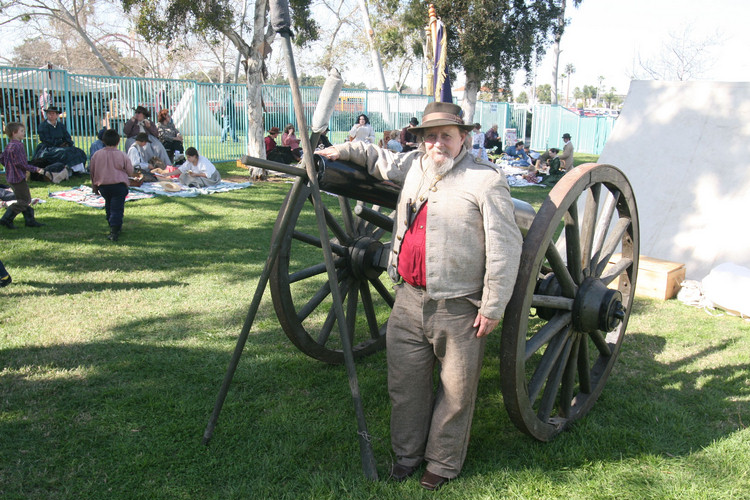
Cannon is from 1864
Did You Know? - During the American Civil War more varieties of artillery projectiles and cannon were used than in any other time in military history. The outbreak of hostilities in 1861, found inventors on both sides searching for the perfect blend of sabot, shell body, and fuze to create the artillery projectile that would give the military advantage to their respective cannoneers. This seemingly unending search for that elusive, perfect projectile continued even after the end of the Civil War.
As a result of these seemingly endless innovations, the student of Civil War artillery today faces a fascinating, and potentially confusing, maze of hundreds of battlefield tested artillery projectiles, cannon, and shells.
They Were Camped For The Weekend
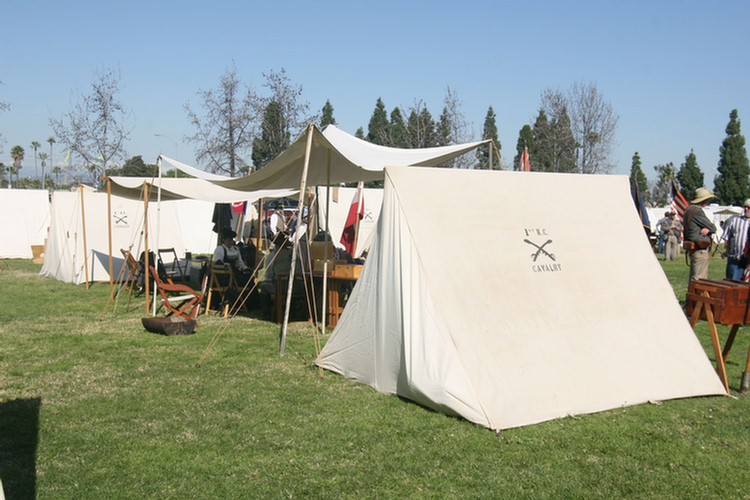
Each tent had the military association markings
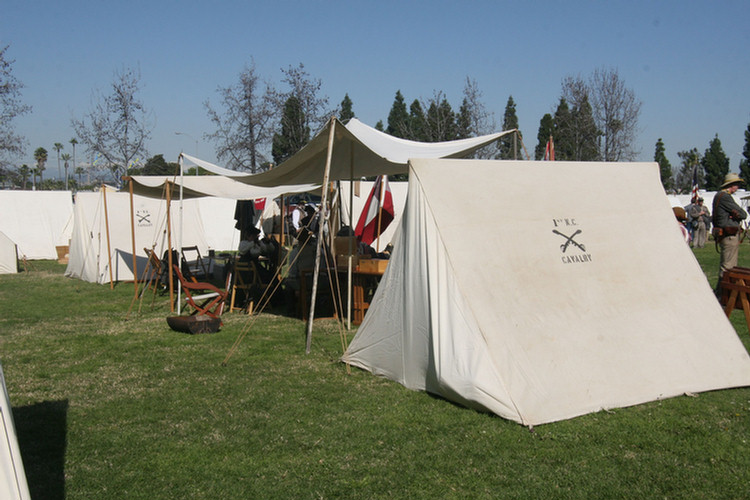
There was close to 100 tents in place this afternoon

Southern Bells were everywhere
The Cannon Demostration Was Fascinating
Did You Know? - Field artillery in the American Civil War refers to the important artillery weapons, equipment, and practices used by the Artillery branch to support the infantry and cavalry forces in the field. It does not include siege artillery, use of artillery in fixed fortifications, or coastal or naval artillery. Nor does it include smaller, specialized artillery termed as infantry guns or mountain guns.

This is a "12-pounder Howitzer" with a range of 1,70 5yards
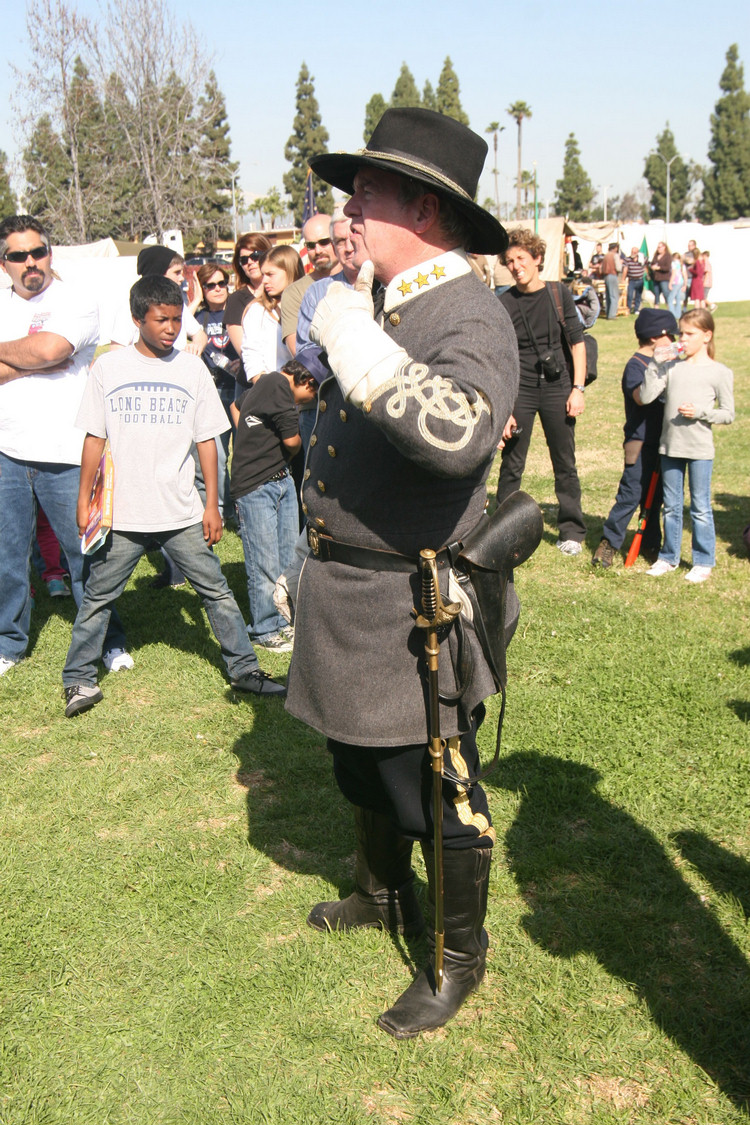
The Colonel gave an excellent pre-demonstration speech
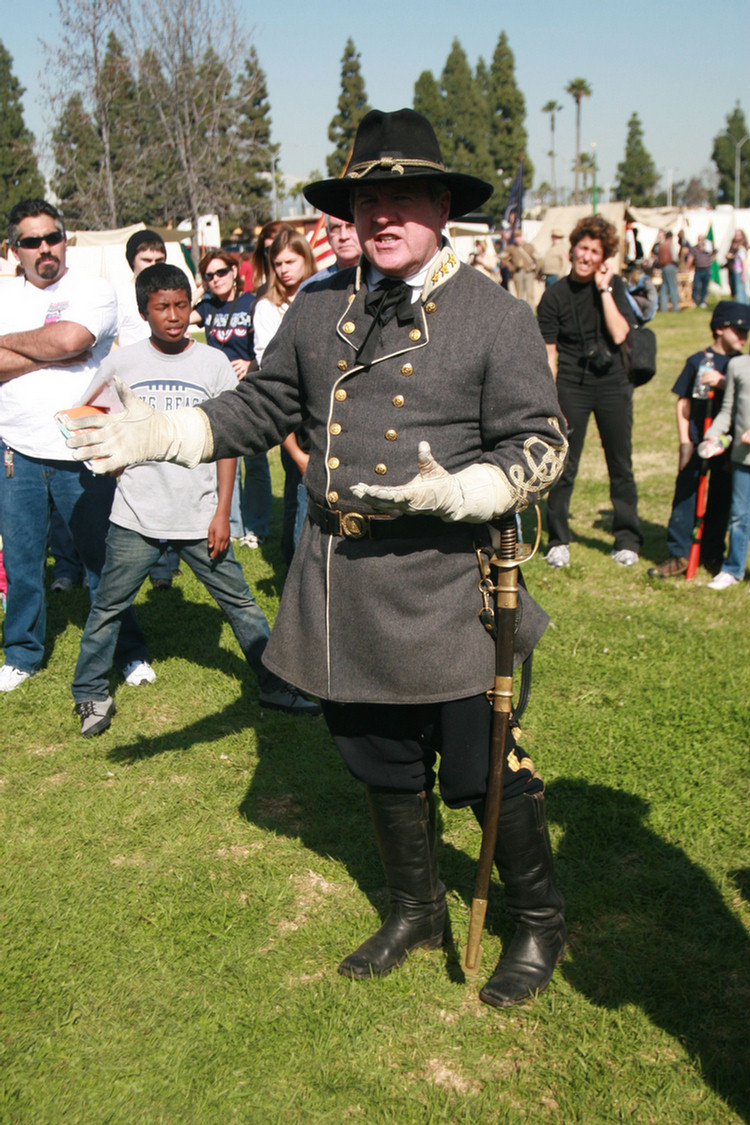
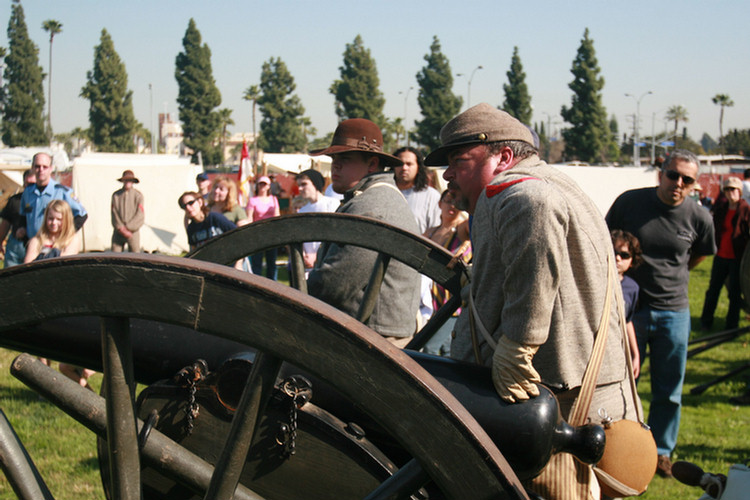
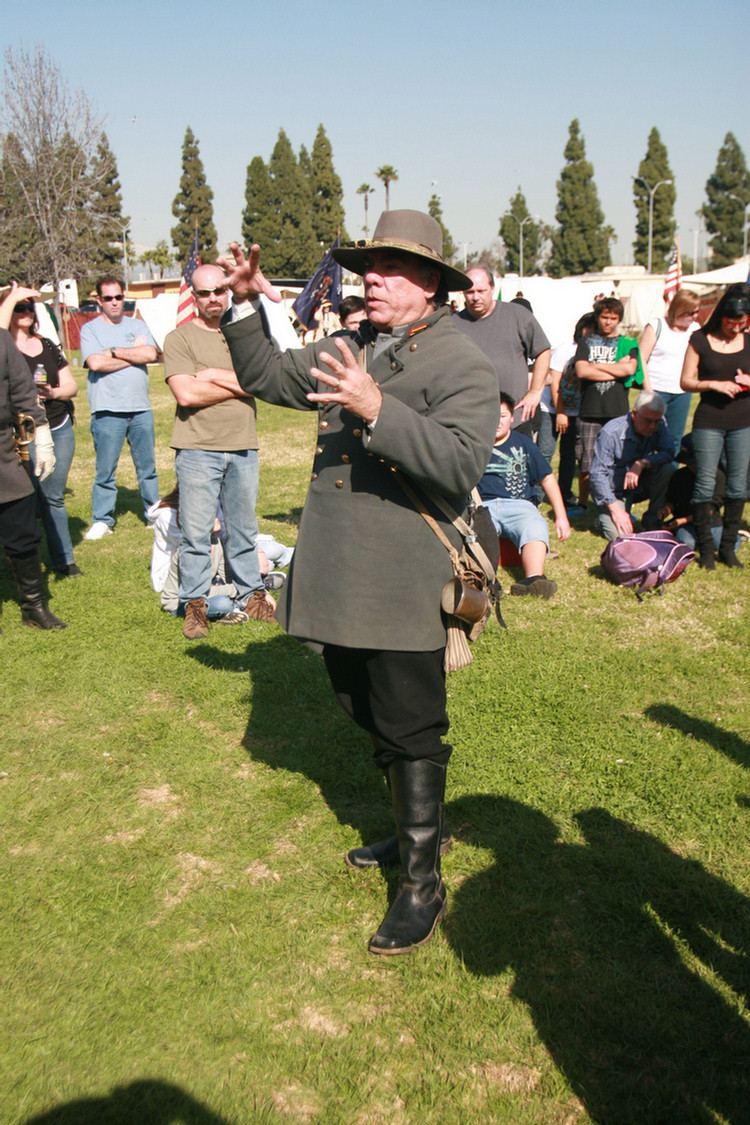

A well synchronized group indeed
Did You Know? - Howitzers were short-barreled guns that were optimized for firing explosive shells in a high trajectory, but also for spherical case shot and canister, over a shorter range than the guns. While field use alluded to firing at targets consisting of enemy forces arrayed in the open, howitzers were considered the weapon of choice if the opposing forces were concealed behind terrain features or fortifications.
Howitzers used lower powder charges than guns of corresponding caliber. Field howitzer calibers used in the Civil War were 12-pounder (4.62 inch bore), 24-pounder (5.82 inch bore), and 32-pounder (6.41 inch bore). Most of the howitzers used in the war were bronze, with notable exceptions of some of Confederate manufacture.

Like a dance
Did You Know? - The twelve-pound cannon "Napoleon" was the most popular smoothbore cannon used during the war. It was named after Napoleon III of France and was widely admired because of its safety, reliability, and killing power, especially at close range. It did not reach America until 1857. It was the last cast bronze gun used by an American army. The Federal version of the Napoleon can be recognized by the flared front end of the barrel, called the muzzle swell. Confederate Napoleons were produced in at least six variations, most of which had straight muzzles, but at least eight catalogued survivors of 133 identified have muzzle swells. Additionally, four iron Confederate Napoleons produced by Tredegar Iron Works in Richmond have been identified, of an estimated 125 cast.
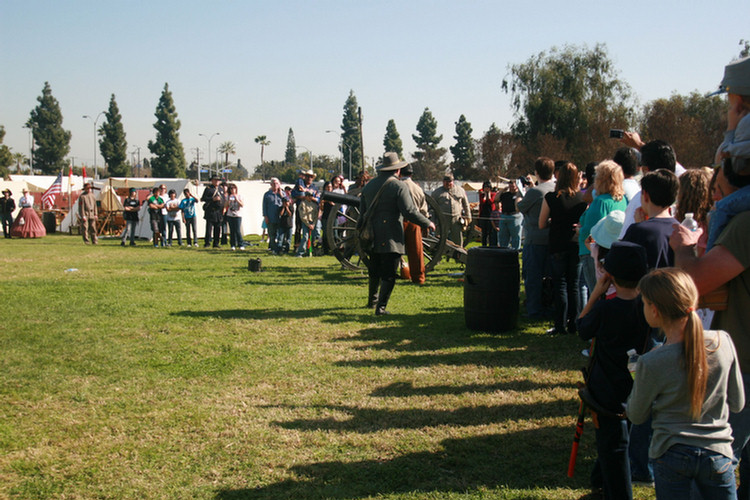
He cleared the field

An informative speaker
Did You Know? - Rifling adds spiral grooves along the inside of the gun barrel for the purpose of spinning the shell or shot and enacting gyroscopic force that increases the accuracy of the gun by preventing the shell from rotating along axes other than the axis parallel to the gun barrel. Adding rifling to a gun tube made it more difficult and expensive to manufacture and increased the length of the tube, but it increased the range and accuracy of the piece.

No projectile but plenty of smoke and a lot of noise!
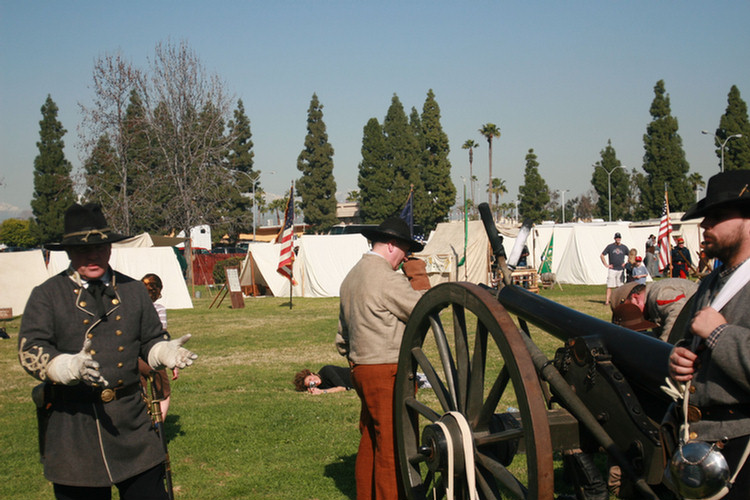
The gun crew was six people and a sergeant who led the unit!
Did You Know? - They used shot, shells, case, shain shot, canisters as projectiles. Canister shot was the deadliest type of ammunition, consisting of a thin metal container loaded with layers of lead or iron balls packed in sawdust. Upon exiting the muzzle, the container disintegrated, and the balls fanned out as the equivalent of a shotgun blast. The effective range of canister was only 400 yards (370 m), but within that range dozens of enemy infantrymen could be mowed down. Even more devastating was "double canister", generally used only in dire circumstances, where two containers of balls were fired simultaneously.
The Infantry Were Bayonet Experts!
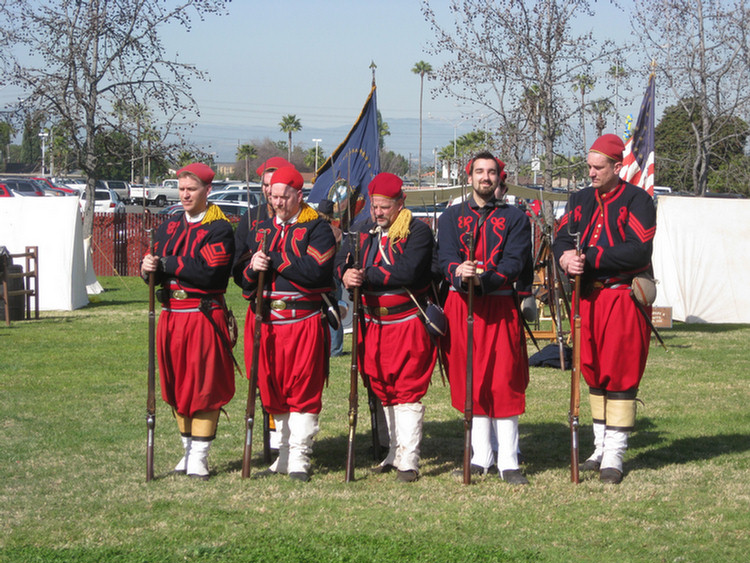
They showed us how to use bayonets
Did You Know? - The origins of the bayonet are somewhat hazy. The term 'Bayonette' dates back to the end of the 16th century, but it is not clear if the weapon at the time was the weapon as is known today or simply a type of knife. For example, Cotgrave's 1611 Dictionarie describes the Bayonet as 'a kind of small flat pocket dagger, furnished with knives; or a great knife to hang at the girdle'. Likewise, Pierre Borel wrote in 1655 that a kind of long-knife called a 'bayonette' was made in Bayonne but does not give any further description .
There is a legend that during the mid-17th century irregular military conflicts of rural France, the peasants of the Southern French town of Bayonne, having run out of powder and shot, rammed their long-bladed hunting knives into the muzzles of their primitive muskets to fashion impromptu spears and, by necessity, created an ancillary weapon.
Another possibility is that the bayonet originated as a hunting weapon: early firearms were fairly inaccurate and took a long time to reload; thus a hunter of dangerous animals such as wild boar could easily have been exposed to danger if the hunter's bullet missed the animal.
The bayonet thus may have emerged to allow a hunter to fend off wild animals in the event of a missed shot. The weapon was introduced into the French army by General Jean Martinet and was common in most European armies by the 1660s.
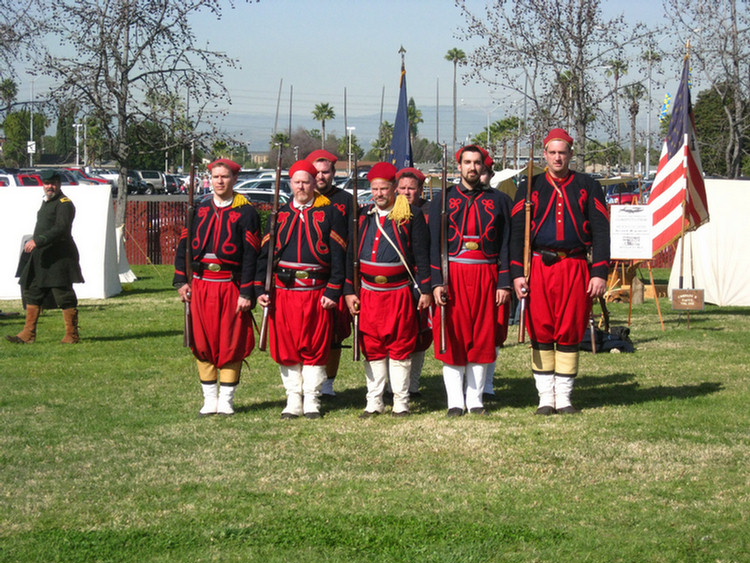
Close order drill with bayonets is NOT a good idea
Did You Know? - The advent of modern warfare in the 1900s decreased the bayonet's usefulness, and as early as the U.S. Civil War (1861–65) the bayonet was ultimately responsible for less than one percent of battlefield casualties

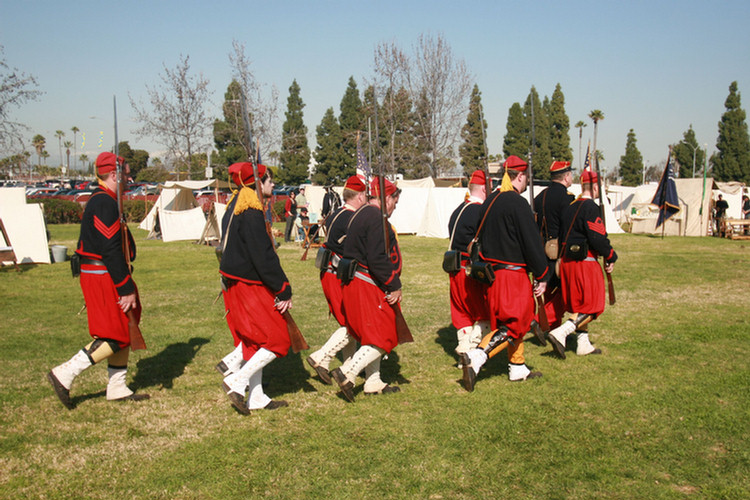

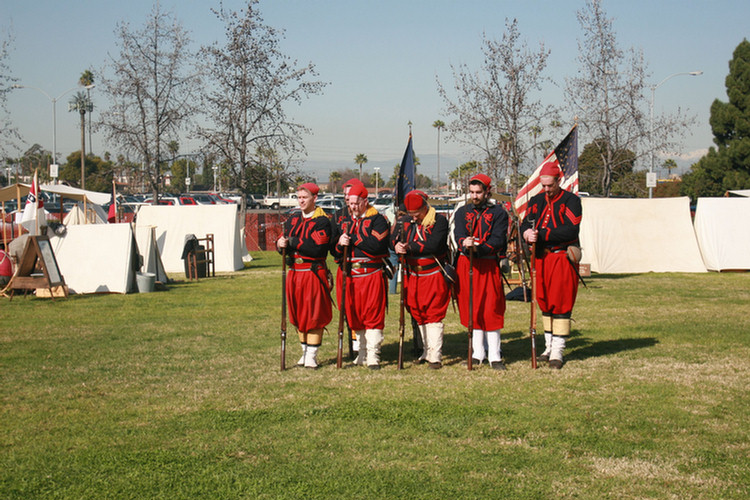
What Is A Calvary Without Horses
Did You Know? - At the time of the Civil War, the cavalry had five major missions, in rough priority:
- Reconnaissance and counter-reconnaissance screening
- Defensive, delaying actions
- Pursuit and harassment of defeated enemy forces
- Offensive actions
- Long-distance raiding against enemy lines of communications, supply depots, railroads, etc
.
Did You Know? - Cavalry in the American Civil War was a branch of army service in a process of transition. It suffered from emerging technology threats, difficult logistics, and sometimes misguided or inept commanders. Nevertheless, it played important roles in many Civil War campaigns and earned its place alongside the infantry and artillery combat arms.

Keep the horses healthy
Did You Know? - The principal item of equipment for a cavalryman was the horse. In the North, over 600,000 cavalry horses were procured by a central agency of the army. They were usually mares or geldings, aged four or five years. During the Civil War, it is estimated that 1.5 million horses died, which includes draft and artillery horses. Equipping a cavalry regiment was an expensive proposition (approximately $100,000 per year for a Union regiment), and they demanded a large logistical infrastructure to support them. A cavalry horse ate 10 pounds (4.5 kg) of grain each day, which had to be transported behind the otherwise fast-moving force.
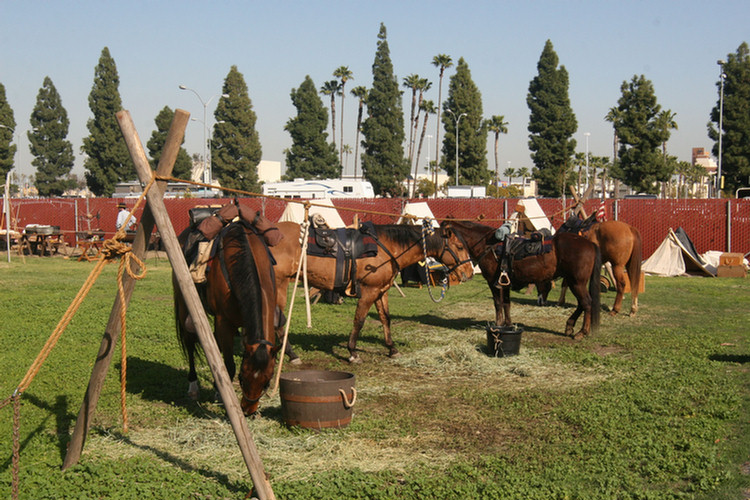
Did You Know? - A Southerner was, on average, considered a superior horseman to his Northern counterpart, especially early in the war. Roads in the rural South were generally poor, and horses were used more for individual transportation than they were for the carriages and streetcars of the urbanized North, where many of the early Federal cavalry regiments were formed. Furthermore, Southern society was more stratified, which made the soldiers more accustomed to a hierarchy of command and were generally considered more suited to the martial lifestyle. Additionally, the strong militia tradition in the antebellum South and the requirements for local 'slave catcher' patrols led to the development of mounted units prior to 1861.
Confederate soldiers owned their horses and were compensated on a monthly basis. If a soldier's horse was sick, injured, or killed, the soldier was responsible for returning home and replacing the horse at his own expense. The general rule was that the soldier had 60 days to return with a new horse or he was forced to become an infantryman, which was considered to be an ignominious fate
The Infantry Was A Dangerous Profession
Did You Know? - The Infantry in the American Civil War comprised foot-soldiers who fought primarily with small arms, and they carried the brunt of the fighting on battlefields across the United States. As the Civil War progressed, battlefield tactics soon changed in response to the new form of warfare being waged in America.
The use of military balloons, rifled muskets, repeating rifles, and fortified entrenchments contributed to the death of many men. Generals and other officers, many professionally trained in tactics from the Napoleonic Wars, were often slow to develop changes in tactics in response.
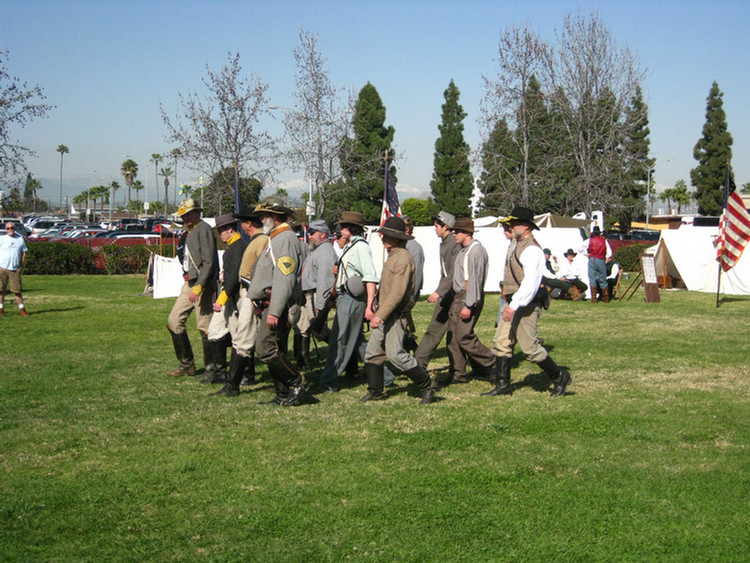
The Calvary trained on foot before getting trained on their horses Infantry unit drilling

Did You Know? - The typical Union soldier carried his musket, percussion cap box, cartridge box, a canteen, a knapsack, and other accouterments, in addition to any personal effects. By contrast, many Southern soldiers carried their possessions in a blanket roll worn around the shoulder and tied at the waist. They might have a wooden canteen, a linen or cotton haversack for food, and a knife or similar sidearm, as well as their musket.
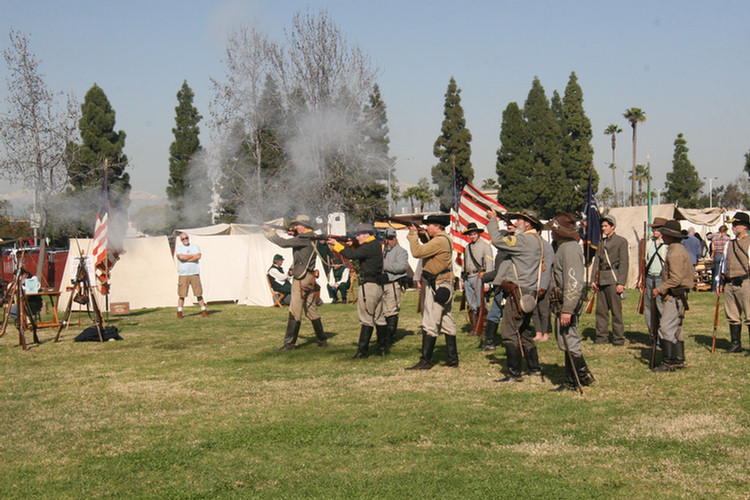
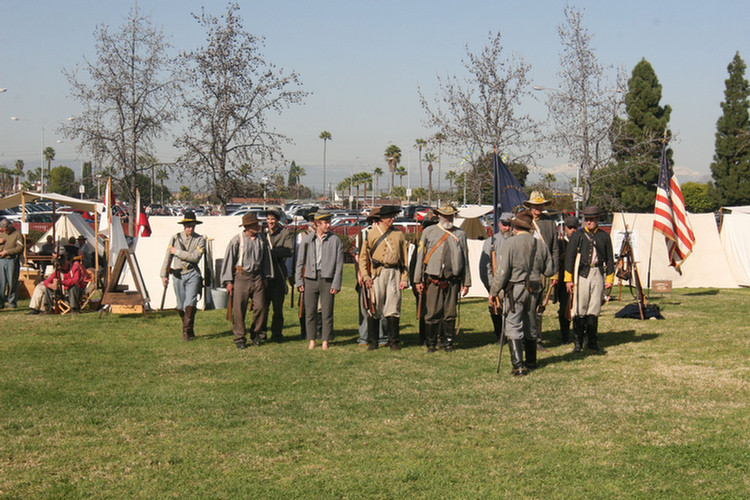
The Grounds Were Full Of Interesting Displays
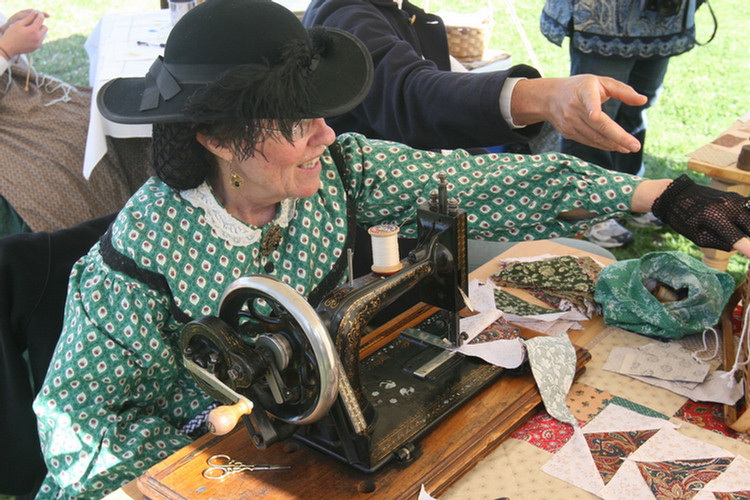
An amazing machine
Did You Know? - Contrary to popular belief that Elias Howe was the first to conceive of the idea of a sewing machine, many other people, including Walter Hunt, had worked on the idea of such a machine before him. However, Howe refined these ideas into a functional machine and on September 10, 1846, he was awarded the first United States patent (U.S. Patent 4,750) for a sewing machine using a lockstitch design.
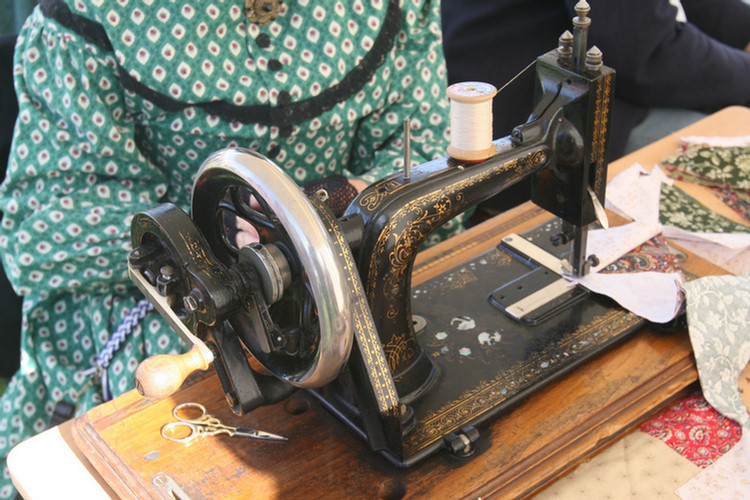
The designs on the machines were hand painted!
Did You Know? - Despite his efforts to sell his machine, other entrepreneurs began manufacturing sewing machines. Howe was forced to defend his patent in a court case that lasted from 1849 to 1854 because he found that Isaac Singer with cooperation from Walter Hunt had perfected a facsimile of his machine and was selling it with the same lockstitch that Howe had invented and patented. He won the dispute and earned considerable royalties from Singer and others for sales of his invention.
Howe contributed much of the money he earned to the equip the 17th Connecticut Volunteer Infantry Regiment of the Union Army during the Civil War, in which Howe served during the Civil War as a private in Company D and regimental postmaster from August 14, 1862, to July 19, 1865.

She provided us many stories about the early machines
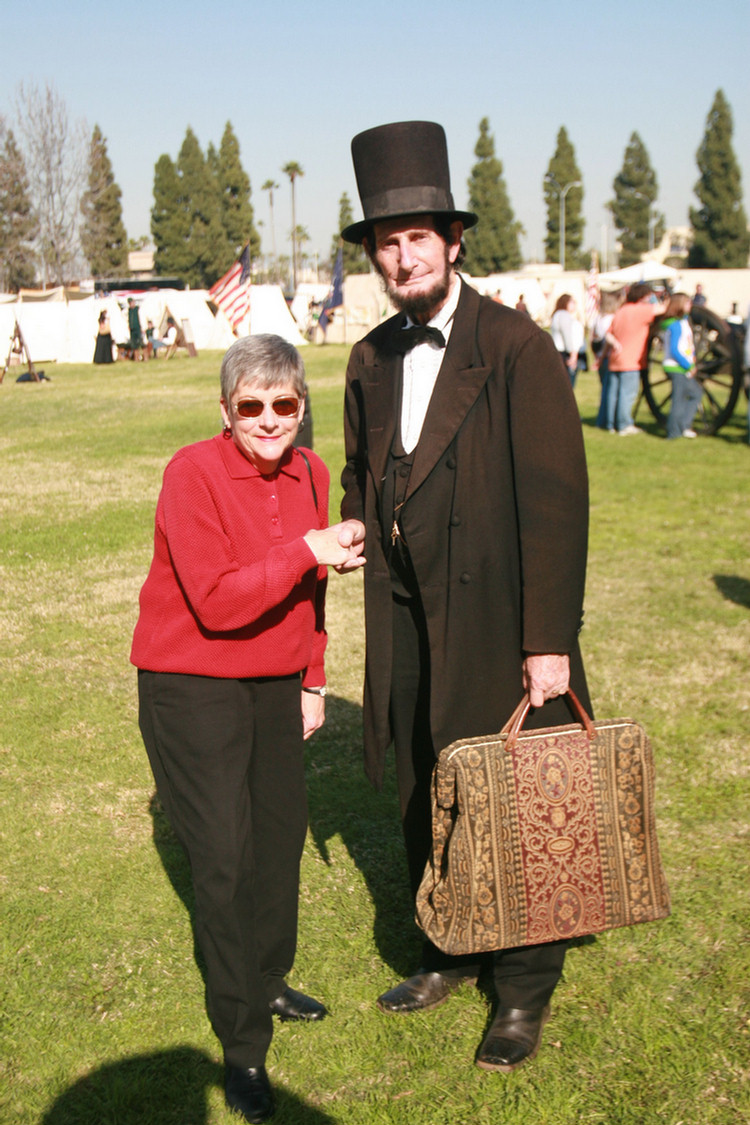
Sue visited with the president
The Civil War Navy Was Well Represented With Ironclads
Did You Know? - An ironclad was a steam-propelled warship in the later part of the 19th century, protected by iron or steel armor plates. The ironclad was developed as a result of the vulnerability of wooden warships to explosive or incendiary shells. The first ironclad battleship, La Gloire, was launched by the French Navy in November 1859. The British Royal Navy had been considering armoured warships since 1856 and prepared a draft design for an armoured corvette in 1857, however in early 1859 the Royal Navy started building two iron-hulled armoured frigates, and by 1861 had made the decision to move to an all-armoured battlefleet.
After the first clashes of ironclads (both with wooden ships and with one another) took place during the American Civil War, it became clear that the ironclad had replaced the unarmored ship of the line as the most powerful warship afloat. This type of ship would come to be very successful in the American Civil War.
The first use of a submarine in combat was the Action of 17 February 1864 during the American Civil War. The Confederate States Navy vessel CSS Hunley became the first submarine to sink an enemy vessel in combat, the USS Housatonic.
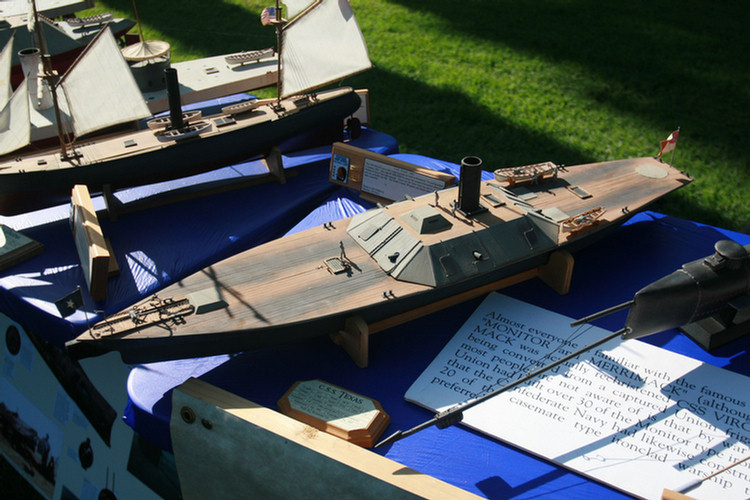
The models are radio controlled and some have cannon's on board that fire
Did You Know? - During the American Civil War, the Union was the first to field a submarine. The French-designed Alligator was the first U.S. Navy sub and the first to feature compressed air (for air supply) and an air filtration system. Initially hand-powered by oars, it was converted after 6 months to a screw propeller powered by a hand crank. With a crew of 20, it was larger than Confederate submarines. Alligator was 47 feet (14.3 m) long and about 4 feet (1.2 m) in diameter. It was lost in a storm off Cape Hatteras on April 1, 1863 with no crew and under tow to its first combat deployment at Charleston.
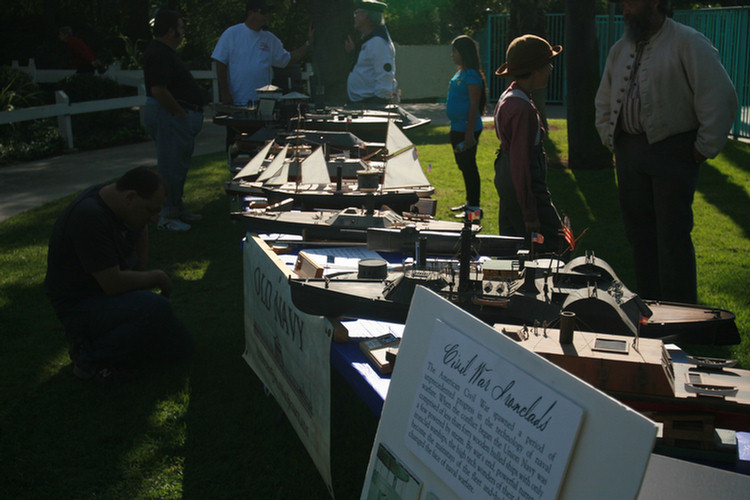

There Were Music And Dance Demonstrations
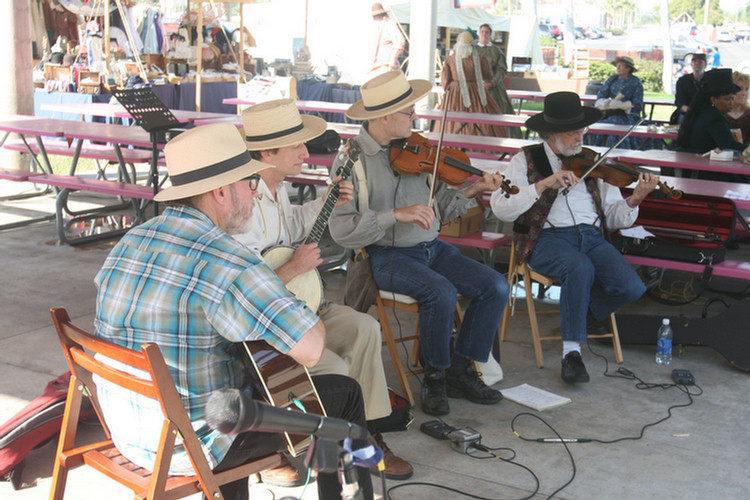

The Camp Shuts Down to The Public At 5:00 And The Re-Enactors Spend The Evening Visiting

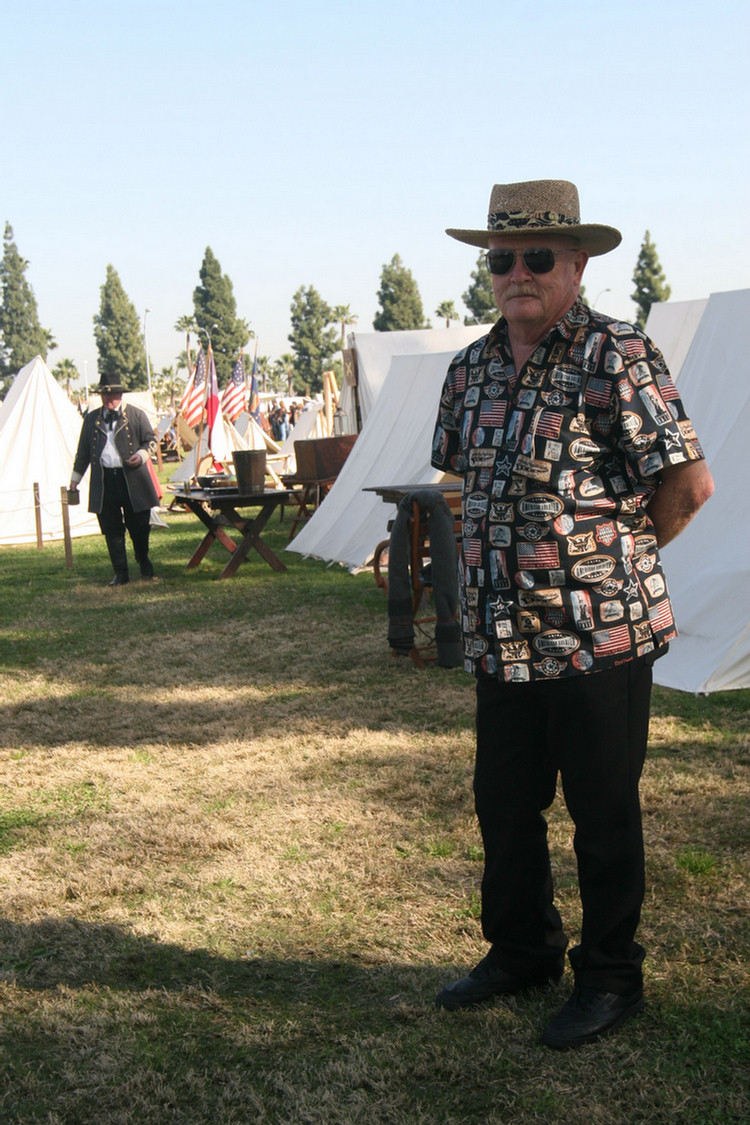
Somehow Paul does not fit into this picture
Trivia
- Of the 364,000 on the Union side who lost their lives, a third were killed or died of wounds and two-thirds died of disease.
- The chance of surviving a wound in Civil War days was 7 to 1; in the Korean War, 50 to 1.
- Many doctors who saw service in the Civil War had never been to medical school, but had served an apprenticeship in the office of an established practitioner.
- Approximately 130,000 freed slaves became Union soldiers during the war.
- Besides the rifle and cannon, weapons consisted of revolvers, swords, cutlasses, hand grenades, Greek fire and land mines.
- About 15 percent of the wounded died in the Civil War; about 8 percent in World War I; about 4 percent in World War II; about 2 percent in the Korean War.
- Most infantry rifles were equipped with bayonets, but very few men wounded by bayonet showed up at hospitals. The conclusion was that the bayonet was not a lethal weapon. The explanation probably lay in the fact that opposing soldiers did not often actually come to grips and, when they did, were prone to use their rifles as clubs.
- Eighty percent of all wounds during the Civil War were in the extremities.
- Most wounds were caused by an elongated bullet made of soft lead, about an inch long, pointed at one end and hollowed out at the base, and called a "minie" ball, having been invented by Capt. Minié of the French army.
- During the Civil war a person who had been drafted could hire a substitute. This bounty system was exploited by so called “bounty jumpers”. These men would hire out to more than one draftee and then make a hasty exit once they were paid. The record for bounty –jumping was held by John O’Connor. He admitted to hiring himself out 32 times before being caught. He received a 4 year prison term.
- The first U. S. Naval hospital ship, the Red Rover, was used on the inland waters during the Vicksburg campaign.
- Black soldiers were paid $10 per month while serving in the Union army. This was $3 less than white soldiers.
- Artillery was used extensively, but only about 10 percent of the wounded were the victims of artillery fire.
- General Robert E. Lee, commander of the Confederate forces, traveled with a pet hen that laid one egg under his cot every morning.
- Fully armed, a soldier carried about seven pounds of ammunition. His cartridge box contained 40 rounds, and an additional 60 rounds might be conveyed in the pocket if an extensive battle was anticipated.
